Ceramic bridge on dental implants.
Dental implants are becoming the preferred choice for replacing missing or damaged natural teeth. Dental implants are made of titanium and act like artificial roots of teeth. Unlike dentures dental implants are fixed and provide the best alternative to natural teeth.
Today we are looking at an example of a ceramic bridge which we made for one of our patients. The patient had recently lost the upper right first molar and was very aware of the missing teeth and the gap that followed. During the consultation we discussed the options available to the patient namely replacing all of the teeth on the right side which were missing vs replacing just the most noticeable teeth closest to the front of the mouth.
Options of treatment
If we were to replace all of the missing teeth on the right side, the patient would require a minimum of 3 implants. The amount of bone in the upper jaw decreases in volume and density the further posterior the position of the implant. The patient did not have sufficient natural bone in order to place 3 implants. In order to place these implants the patient would have required additional bone grafting. Once we discussed the procedure and the options available to the patient he decided against this. Bone grafting requires a longer healing period when compared to normal implant placement. A sinus graft usually requires a minimum of 9 months healing before natural bone and graft has healed.
The patient opted instead for just a single implant placed in his own natural bone. As the position of this first implant was fully within the natural bone, we were able to place a longer and wider implant. In this case we were able to support two teeth on the single implant. This type of restoration has both advantages and some disadvantages.
Cantilever bridge on dental implants
Advantages
- Less costly as less number of implants are required
- Where space is limited, only a single implant is placed. This can be particularly useful in areas where there is insufficient space for more than one implant but more teeth are missing like lower anterior incisors.
- Where bone is compromised a cantilever bridge can avoid such areas , maximizing areas where bone may be better and stronger.
- In certain cases a cantilever bridge may provide a more aesthetic restoration when compared to 2 individual dental implant crowns on 2 dental implants.
Disadvantages
- A cantilever bridge is less stable than a conventional bridge which is supported on each side.
- When compared to a conventional bridge design, a cantilever bridge creates a ‘cantilever’ force on the implant and this can provide excessive stress or load on an implant or natural tooth.
- More prone to decementation
- More prone to fracture.
- The bridge needs to be designed so that limited amounts of pressure are exerted on the bridge especially the additional tooth which is not directly below the implant. Failure to reduce the force on the cantilever bridge can lead to implant failure.
The patient was fully aware of the options of treatment, the risks involved and the advantages and disadvantages of treatment.
If you are considering dental implant treatment it is important to know the options of treatment available, the possible risks or complications involved. All treatment carries some element of risk. Speak to your dentist today about the option of dental implants and how you too can get rid of your gap or removable denture for ever. For more details please feel free to Contact Brighton Implant Clinic or Call us on 0800 111 6623.


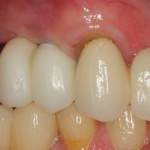
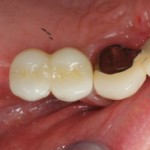
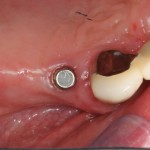
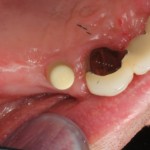
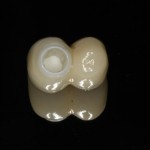


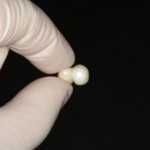
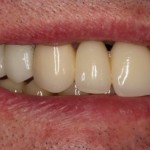
Comments are closed here.